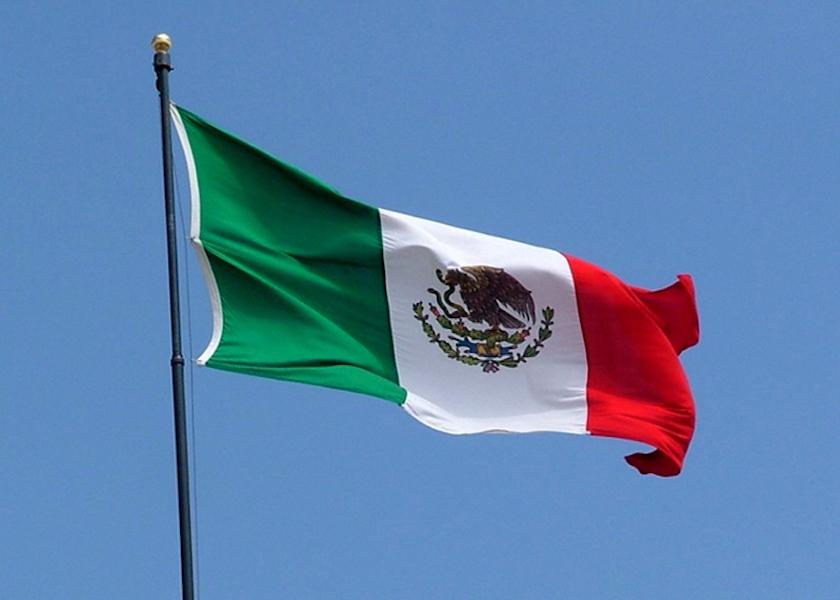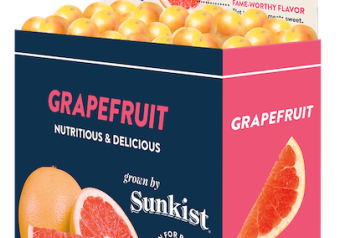Texas ports grow in importance for Mexican fruits and vegetables

The Laredo port district in Texas is capturing a significant share of northbound produce shipments from Mexico, a new USDA report reveals.
Called the "U.S.-Mexico Agricultural Trade Logistics Review," the report indicated that, excluding avocados, about 38% of Mexico’s fresh fruit and vegetable exports flow through Laredo crossings, 30% through Nogales, Ariz., and 17% through San Diego.
Much like fresh produce southbound from the U.S., Mexico’s exports of fresh fruits and vegetables are shipped almost exclusively by truck, the report said.
In value terms, the U.S. held a 64% market share of all agricultural and related exports to Mexico in 2021. During the same year, 81% of Mexico’s total agricultural exports went to the U.S.
While U.S. exports of fresh produce to Mexico often flow through the Western land ports such as Nogales and San Diego, the report said northbound shipments are more heavily oriented toward eastern commercial crossings in Texas.
“Some exceptions exist for products whose production zones in Mexico are in closer proximity to the Nogales/San Diego commercial crossings such as table grapes and watermelon,” the report said. “However, existing infrastructure, inspection capacity, and more direct access to the largest U.S. markets dictate more eastbound trade flows.”
In fact, U.S. imports of avocados from Mexico, totaling more than 1 million metric tons in 2021, are largely shipped through the Laredo district in Texas, the report said.
“Fresh tomatoes represent another product that is shipped at volume through the Laredo district throughout the year (especially through the McAllen port of entry),” the report said. However, the report said there are also seasonal increases through Nogales in the first half of the year with a less-pronounced increase through San Diego mid- to late year.
The report said a notable feature of Mexican fresh fruit and vegetable trade through the Laredo district is the extent to which certain products flow through certain ports of entry.
“For example, a large majority of fresh fruit and vegetables transit through the Reynosa/McAllen port of entry as opposed to the Laredo/Colombia port of entries,” the report said.
Based on the geography of production zones for several fresh products in Mexico, the report said the Nogales port of entry is also a seasonally important conduit particularly of table grapes, watermelon and several vegetable varieties.
In 2021 and 2022, northbound agricultural trade from Mexico to the U.S. has been characterized by record values due in part to the current high-price environment for food and agricultural products, the report said.
“Strong consumer demand in the U.S. continues to contribute to record volumes of food and agricultural imports,” the report said.
Another feature of cross-border trade during COVID-19 was an increasing imbalance between north and southbound freight shipped via truck, with far more freight heading northbound than southbound, the report said.
“This imbalance is not new and for several years predating COVID, food and agricultural trade via truck was more heavily northbound-oriented. However, the imbalance sharpened in 2020 and 2021. A north-south imbalance that was traditionally 3-to-1 reached as high as 8-to-1 in late 2020. Also complicating the commercial truck area of the supply chain are driver shortages on both sides of the border.”
The report said the national trucking association in Mexico (CANACAR) estimated that Mexico has a shortage of up to 50,000 truckers.
Border trouble
In early April 2022, the state of Texas instituted additional inspections of commercial vehicles at several commercial crossings with Mexico for approximately a week and a half, the report said.
“This state policy touched off a brief but acute logistical crisis in which northbound commercial trucks experienced extended wait times to cross into the U.S.,” the report said.
“The most immediate impact was felt amongst shippers of northbound fresh and perishable items," the report said. "However, indicative of the interdependent nature of the cross-border supply chain, these northbound delays began to impact the speed with which short haul or drayage trucks were being turned around at the border, and in some cases southbound cargo began to feel disruptions as well.”
Protests of this policy on the Mexico side of the border also stopped southbound traffic at various ports of entry for short durations, according to the report.
The brief but sudden slowdown of volume of northbound consumer-oriented trade is not immediately apparent in available trade data, the report said.
“Overall, northbound volumes through Laredo in April 2022 were well above the 5-year average,” the report said.
“However, economic studies conducted afterwards estimated industry losses in the hundreds of millions of dollars.”
The week of Dec. 12, 2022, reports indicated similar inspections were taking place at the Bridge of the Americas commercial crossing in El Paso, the report said.
“At time of this publication, reports indicate northbound commercial traffic is being routed through nearby ports of entry without delays of the magnitude witnessed earlier this year,” the report said.
A potential yet currently unrealized result of the inspection policy is the consideration of a broader range of locations and modes of transport through which products are traded between the two countries, the report said.
"The TMEC Corridor is one example: a rail project that remains in the planning phase to link the Mexican Pacific seaport of Mazatlan to points throughout North America as far north as Winnipeg, Canada," the report said.
Following the April 2022 inspections, the government of Mexico publicly indicated interest in shifting the route west of Texas to nearby Santa Teresa, N.M., as an alternative, the report said.
Currently Santa Teresa handles less freight than other commercial crossings, such as those in nearby El Paso.
This corridor is also a project being developed by private firms, so there are various stakeholders that would decide the eventual route of the corridor.
“Other ‘corridors’ seeing interest in further development include the Ports to Plains Corridor and the U.S.-57 Corridor," the report said. Beginning in Texas at the Laredo commercial crossings, Port to Plains spans multiple states (Texas, New Mexico, Oklahoma, Colorado), with the objective of upgrading segments of road to interstate-standard highway.
Currently under a feasibility study, the U.S. 57 corridor would connect the Eagle Pass/Piedras Negras commercial crossing with U.S. Interstate 35, south of San Antonio, with an improved four-lane roadway in the U.S. and would include infrastructure improvements south of the port of entry in Coahuila, Mexico, the report said.
“Trade along the entire U.S.-Mexico border is projected to grow in the coming years,” the report said. “There are numerous ongoing or planned improvements to existing commercial crossing infrastructure in order to efficiently handle the growing volumes. Most recently this year, the United States and Mexico issued a joint statement that included information on border modernization, and both countries at the federal level have committed nearly $5 billion towards those efforts. At various ports of entry along the land border, there are numerous infrastructure projects (both publicly and privately funded) with implications for commercial traffic capacity."
The report said trade between the U.S. and Mexico has deep roots.
“While obvious in many ways, it deserves emphasizing that while Mexico conducts robust and diverse trade with the world, no competitor can match logistical advantages of the nearly 2,000-mile land border with multiple commercial port of entries, and the ability to land bulk products by oceangoing vessel at relatively competitive rates," the report said.







